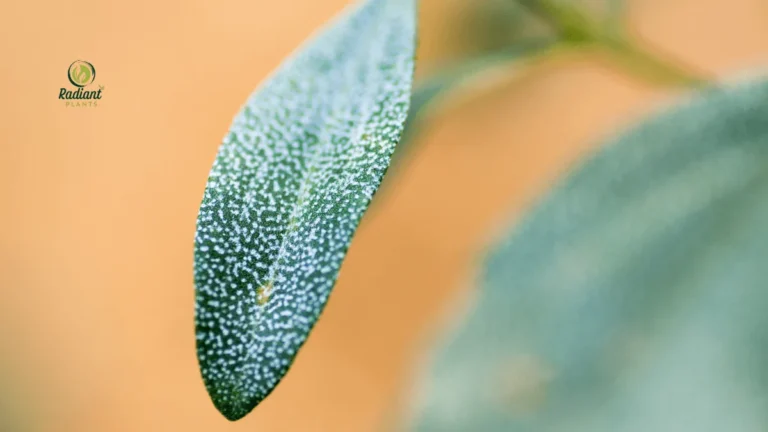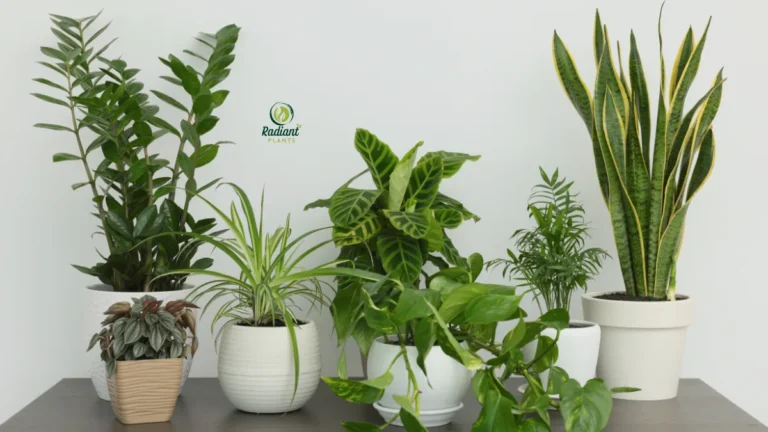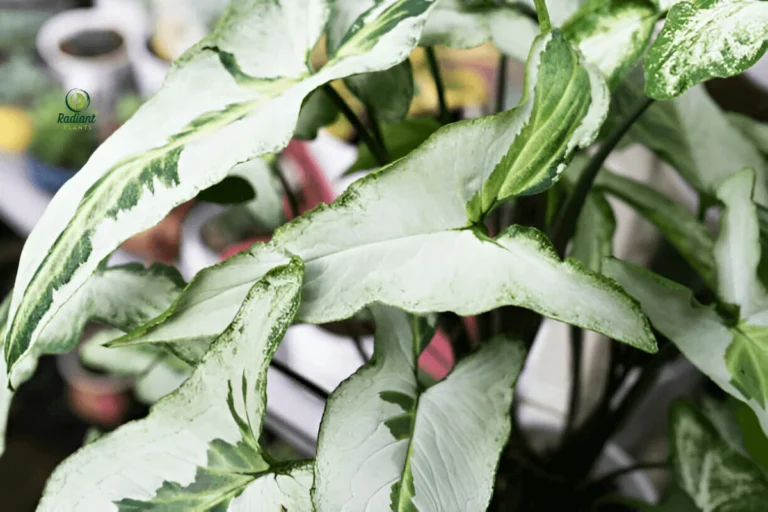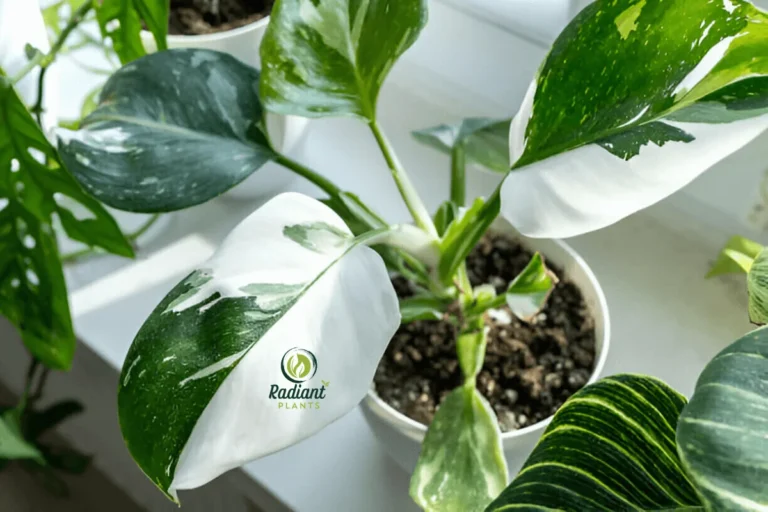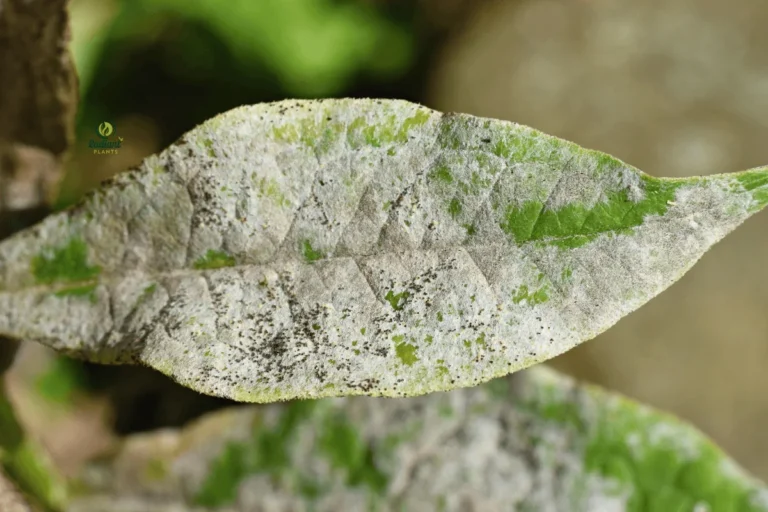Sunburn on Plants: 5 Ruthless Recovery Secrets Revealed
Picture this: You wake up one morning, coffee in hand, ready to admire your beautiful indoor garden. But instead of lush green leaves, you’re greeted by crispy, brown edges and bleached spots covering your once-thriving houseplants. Sound familiar? You’ve just witnessed the devastating effects of sunburn on plants, and you’re not alone.
Here’s the shocking truth: most plant parents unknowingly torch their beloved indoor gardens every single day. Sunburn on plants happens more often than you think. That sunny windowsill you thought was perfect? It might be a death trap. That “bright light” you provide with the best intentions? It could be slowly cooking your green friends alive.
But don’t panic just yet. Sunburn on plants doesn’t have to mean game over for your indoor jungle. I’m about to share 5 ruthless recovery secrets that can bring your dying plants back from the brink. These aren’t your typical “water more” or “give it time” suggestions. These are aggressive, proven methods that work when everything else fails.
By the end of this guide, you’ll understand exactly how sunburn on plants happens, how to spot it before it’s too late, and most importantly, how to rescue your scorched houseplants using techniques that most plant parents never learn.
Table of Contents
Table of Contents
What is Sunburn on Plants and Why Indoor Plants Suffer




The Science Behind Plant Sunburn
Let’s get one thing straight: plants can get sunburned, just like we can. Sunburn on plants occurs when UV rays hit plant cells and damage the chlorophyll that makes leaves green and helps plants make food. Think of chlorophyll as tiny solar panels that convert sunlight into energy. Too much intense light, and these solar panels fry.
Here’s what happens inside your plant when sunburn on plants strikes. The UV radiation breaks down the chlorophyll molecules faster than the plant can replace them. This leaves behind brown, dead tissue that looks burned because, well, it is burned. The plant cells cook from the inside out, which is why sunburn on plants creates those crispy, papery patches you see on damaged leaves.
Indoor plants are especially vulnerable to sunburn on plants because they’re not used to intense, direct sunlight. In nature, many houseplants grow under tree canopies or in shaded areas. When we suddenly blast them with hours of direct sun through a window, it’s like taking someone who lives in a cave and dropping them on a beach in Miami without sunscreen.
The glass in your windows makes sunburn on plants even worse. It acts like a magnifying glass, concentrating the sun’s rays and creating hot spots that can cook your plants. Add in the reflection from nearby surfaces, and you’ve got a recipe for plant disaster.
Common Misconceptions About Plant Light Needs
Here’s where most plant parents go wrong: they think more light always equals healthier plants. This myth has probably killed more houseplants than any pest or disease. The truth is, there’s a huge difference between bright light and direct sun, and most indoor plants prefer the former.
Bright light means your plant gets plenty of illumination without the harsh, direct rays that cause burning. Think of it like sitting near a window versus sitting directly in the sun. You can read a book in both spots, but only one will leave you with a sunburn.
Many popular indoor plants like pothos, snake plants, and peace lilies actually prefer filtered or indirect light. When you put them in a south-facing window with hours of direct sun, you’re basically torturing them. They’ll try to survive, but sunburn on plants is often the result.
Another big mistake is not adjusting for seasons. That east-facing window that was perfect in winter might become a death trap in summer when the sun is stronger and higher in the sky. Understanding how to prevent sunburn on plants means adjusting your plant care throughout the year, but most people set them somewhere and forget about them.
5 Warning Signs Your Indoor Plants Have Sunburn
Visual Symptoms Every Plant Parent Must Recognize
Spotting sunburn on plants early can mean the difference between a quick recovery and total plant loss. The first warning sign is brown, crispy edges on leaves. These aren’t the soft, gradual browning you might see from underwatering. Sunburn creates hard, paper-like edges that crumble when you touch them.
Next, look for bleached or faded spots on the leaves. These areas lose their green color and turn white, yellow, or tan. They often appear on the parts of the plant that get the most direct sun, like the tops of leaves or the sides facing your brightest window.
Another telltale sign is wilting despite adequate watering. When sunburn on plants occurs, the damaged leaves lose the ability to hold water properly. You might water your plant perfectly, but the damaged leaves still droop and look thirsty. This happens because the burned tissue can’t transport water effectively anymore.
Watch for sudden color changes, too. Healthy green leaves that quickly turn yellow, brown, or develop strange patches are probably suffering from sun damage. Recognizing these early signs of sunburn on plants is different from the gradual yellowing you see with natural aging or nutrient problems.
Behavioral Changes in Sun-Damaged Plants
Sunburn on plants doesn’t just affect how they look; it changes how they behave, too. One of the first things you’ll notice is stunted growth. When a plant’s leaves are damaged, it can’t make food properly through photosynthesis. This means it has less energy for growing new leaves, stems, or roots.
Leaf drop is another major red flag. Plants will often shed damaged leaves to conserve energy for the healthy parts. If your plant suddenly starts dropping leaves, especially ones with brown edges or bleached spots, sun damage is likely the culprit.
You might also notice that new growth looks weak or pale. When sunburn on plants damages the existing leaves, the plant struggles to support new growth. New leaves might come in smaller, lighter colored, or more fragile than usual.
Finally, watch for changes in how your plant responds to watering. Sun-damaged plants often become harder to keep properly hydrated. They might need water more frequently, or conversely, they might develop root problems from stress and need less water than before. Understanding these behavioral changes helps you identify sunburn on plants before it becomes severe.
| Warning Sign | What It Looks Like | What It Means |
|---|---|---|
| Crispy leaf edges | Hard, brown, paper-like edges | Direct sun damage to leaf tissue |
| Bleached spots | White, yellow, or tan patches | Chlorophyll destruction from UV rays |
| Wilting with wet soil | Droopy leaves despite watering | Damaged tissue can’t transport water |
| Rapid yellowing | Quick color changes in healthy leaves | Stress response to sun damage |
| Stunted growth | No new leaves or smaller growth | Plants conserve energy for survival |
Recovery Secret #1 – The Emergency Shadow Protocol
Immediate Damage Control Steps
When you discover sunburn on plants, time is everything. The first 24-48 hours determine whether your plant will recover or continue declining. Your immediate goal is to stop further damage and give your plant the best chance to heal.
Step one: Move your plant away from direct sunlight immediately. Don’t worry about finding the “perfect” spot right now; just get it somewhere safe. A bathroom, closet, or any room without direct sun will work temporarily. The key is stopping the burning process before it spreads to more leaves.
Next, assess the damage carefully. Look at every leaf and stem to understand how much of your plant is affected. Take photos if it helps you track the damage over time. This isn’t just for documentation; it helps you make better treatment decisions later.
Create an emergency recovery environment by finding a spot with bright, indirect light. Think of the light you’d have sitting next to a north-facing window or several feet back from an east-facing one. The plant should still be able to see the sky, but no direct sun rays should hit the leaves.
Increase humidity around your stressed plant if possible. Sunburned plants lose water faster than healthy ones, so extra moisture in the air helps them recover. You can use a humidifier, group plants together, or place the pot on a tray of wet pebbles.
Why Most People Fail at This Critical First Step
The biggest mistake people make is not acting fast enough. They notice the damage but think it will get better on its own, or they wait to see if it spreads. By the time they take action, the sunburn on plants has often progressed too far for easy recovery.
Another common error is moving the plant to a spot that’s too dark. While you want to avoid direct sun, your plant still needs light to heal and function. A completely dark room will stress the plant further and slow recovery from sunburn on plants. Look for bright, filtered light instead.
Many plant parents also make the mistake of immediately repotting or fertilizing a sun-damaged plant. This seems helpful, but it adds more stress when the plant is already struggling. Wait until you see signs of recovery before making major changes to the plant’s environment.
Finally, people often panic and start cutting off damaged parts right away. While pruning is important (we’ll cover this in secret #2), doing it too quickly or too aggressively can shock an already stressed plant. Give your plant a few days to stabilize before making major cuts.
Recovery Secret #2 – Strategic Pruning for Maximum Revival
Which Damaged Parts to Remove First
Strategic pruning is like performing surgery on your plant. Done right, it redirects the plant’s energy toward healthy growth and prevents disease. Done wrong, it can kill a plant that might have otherwise recovered from sunburn on plants. The key is knowing exactly what to cut and what to leave alone.
Start by removing any leaves that are more than 50% damaged. These leaves are using more energy than they’re producing, which drains resources from healthy parts of the plant. Look for leaves with large brown areas, completely bleached sections, or crispy texture throughout most of the leaf.
Focus on the most severely damaged areas first. If an entire stem or branch is affected by sunburn on plants, it’s usually better to remove the whole thing rather than trying to save individual leaves. This might seem harsh, but it prevents the plant from wasting energy on tissue that will never recover.
Always cut back to healthy tissue. When you remove a damaged leaf or stem, make your cut just above a node or healthy leaf. This encourages new growth and prevents the cut end from dying back further. Use clean, sharp scissors or pruning shears to make smooth cuts that heal quickly.
Don’t remove more than 25-30% of the plant at once, even if more appears damaged. Plants need some leaves to survive and recover. If your plant is severely damaged, plan to prune in stages over several weeks rather than doing it all at once.
Timing Your Pruning for Optimal Recovery
Timing is everything when it comes to pruning sun-damaged plants. The best time to prune is typically 3-5 days after moving the plant to safety. This gives the plant time to stop declining and begin stabilizing, but it’s soon enough to prevent further energy waste on damaged tissue.
Avoid pruning during the plant’s dormant season unless the damage is severe. Most houseplants recover better when pruned during their active growing season (spring and summer for most species). However, if sunburn on plants is causing rapid decline, emergency pruning might be necessary regardless of season.
Consider the plant’s overall health when timing your pruning. A plant that was healthy before the sun damage can handle more aggressive pruning than one that was already struggling. Weak or stressed plants need gentler treatment and may require several small pruning sessions instead of one big one.
Weather and environmental conditions matter too. Prune when you can provide stable conditions afterward. Avoid pruning right before major temperature changes, when you’ll be traveling, or during other stressful times for your plant.
Recovery Secret #3 – The Hydration Reset Method
Adjusting Watering for Sun-Stressed Plants
Sunburned plants have different water needs than healthy ones, and getting this wrong can undo all your other recovery efforts. The damaged leaves can’t regulate water properly, which means your normal watering routine probably won’t work anymore.
First, check the soil moisture more frequently than usual. Sun-damaged plants often lose water faster because their leaves can’t close their pores (stomata) properly. This means they might need water more often, but they also might not be able to use it efficiently.
When you do water, do it slowly and thoroughly. Water until it runs out of the drainage holes, then wait for the excess to drain away. This ensures the entire root system gets moisture, which is crucial for recovery. Shallow watering won’t help a plant that’s trying to rebuild damaged tissue.
Pay attention to the plant’s response to watering. Healthy plants perk up within a few hours of watering, but sunburned plants might take longer to respond. Don’t panic if your plant doesn’t immediately look better after watering; damaged tissue takes time to heal.
Consider the humidity around your plant, too. Sunburn on plants often means the leaves lose moisture faster than normal, so increasing humidity can reduce water stress. This is especially important if you live in a dry climate or use heating or air conditioning that dries the air.
Soil Amendments That Accelerate Healing
The right soil amendments can significantly speed up recovery from sunburn on plants. Think of these as medicine for your plant’s root system, helping it take up nutrients and water more effectively while it heals.
Adding organic matter like compost or worm castings provides gentle, slow-release nutrients that support healing without overwhelming the plant. These amendments also improve soil structure, making it easier for roots to access water and nutrients.
Consider adding a small amount of perlite or vermiculite to improve drainage and aeration. Sun-stressed plants are more prone to root rot because their damaged leaves can’t regulate water uptake properly. Better drainage helps prevent water from sitting around the roots too long.
Mycorrhizal fungi supplements can work wonders for recovering plants. These beneficial fungi form partnerships with plant roots, helping them absorb water and nutrients more efficiently. This is especially helpful when the plant’s leaves are damaged and can’t support the root system as well as usual.
Avoid heavy fertilizers or amendments during the first few weeks of recovery. Sun-damaged plants are already stressed, and too many nutrients can make things worse. Stick to gentle, organic amendments until you see signs of new growth.
| Amendment Type | Purpose | When to Apply | Amount |
|---|---|---|---|
| Compost | Gentle nutrition and soil structure | Immediately during repotting | When the soil stays too wet |
| Perlite | Drainage and aeration | 10-15% of the soil mix | 10-15% of soil mix |
| Mycorrhizal fungi | Improved nutrient uptake | At planting or watering | Follow package directions |
| Worm castings | Slow-release nutrients | During active recovery | 1-2 tablespoons per pot |
Recovery Secret #4 – Light Therapy Rehabilitation
Gradual Light Reintroduction Protocol
Just like humans recovering from sun damage need to gradually build up their tolerance again, plants with sunburn need careful light therapy to regain their strength. Rushing this process is one of the fastest ways to cause more damage and set back recovery.
Start your plant in bright, indirect light for at least two weeks after the initial damage. This means the plant can “see” the sky and has enough light to function, but no direct sun rays touch the leaves at any time of day. A spot near an east-facing window but not directly in front of it works well.
After two weeks of stable recovery (no new damage, some signs of new growth), you can begin gradual exposure to morning sun. Start with just 15-30 minutes of very early morning light, before 9 AM when the sun is gentlest. Monitor the plant closely for any signs of stress.
Increase sun exposure by 15-30 minutes every week, but only if the plant continues to show positive signs. Watch for new growth, improved leaf color, and overall vigor. Any sign of renewed burning means you’re moving too fast and need to back off.
Most houseplants recovering from sunburn on plants will never need more than 2-3 hours of direct morning sun, even after full recovery. Remember, these plants evolved to live in filtered light, not full sun. The goal is healthy growth, not maximum sun tolerance.
Creating the Perfect Recovery Environment
The ideal recovery environment provides everything your plant needs to heal while protecting it from further stress. Think of it as a plant hospital room where everything is optimized for healing.
Light should be bright but filtered. North-facing windows are often perfect, or you can create filtered light by hanging sheer curtains over brighter windows. The light should be consistent throughout the day without dramatic changes that could stress the plant further.
Temperature stability is crucial for recovery. Avoid spots near heating vents, air conditioners, or drafty areas. Sun-damaged plants are already stressed and can’t handle temperature fluctuations as well as healthy plants. Aim for consistent temperatures between 65-75°F.
Humidity should be higher than normal to help damaged leaves retain moisture. If your home is dry, consider using a humidifier or creating a humidity zone by grouping plants. The goal is 40-60% humidity, which is higher than most homes maintain naturally.
Air circulation helps prevent fungal problems that can attack stressed plants, but avoid strong drafts that could further dry out damaged leaves. A small fan running on low speed several feet away can provide gentle air movement without creating stress.
Recovery Secret #5 – Advanced Nutrient Intervention
Supplements That Supercharge Plant Recovery
When dealing with severe sunburn on plants, sometimes basic care isn’t enough. Advanced nutrient intervention can mean the difference between slow recovery and rapid regeneration. These aren’t everyday fertilizers; they’re targeted treatments for specific recovery needs.
Kelp meal or liquid kelp extract provides growth hormones and trace minerals that help plants rebuild damaged tissue. These natural growth regulators stimulate new cell formation and can dramatically speed up the healing process. Apply as a dilute foliar spray or soil drench every 2-3 weeks during recovery.
Calcium supplements help strengthen new growth and improve the plant’s ability to regulate water. Sun-damaged plants often have trouble with water regulation, and calcium helps rebuild the cellular structures that control this process. Use a dilute calcium chloride solution or bone meal worked into the soil.
Vitamin B1 (thiamine) supplements can reduce transplant shock and help stressed plants recover faster. This is particularly useful if you have to repot your plant during recovery or if it’s showing signs of severe stress beyond just the sun damage.
Silica supplements strengthen plant tissues and make them more resistant to future stress. Once your plant is actively recovering, adding a silica supplement can help new growth come in stronger and more resistant to environmental challenges.
Monitoring Progress and Adjusting Treatment
Recovery from sunburn on plants isn’t linear, and what works for one plant might need adjustment for another. Successful treatment requires careful monitoring and a willingness to adapt your approach based on what you’re seeing.
Look for positive signs like new growth appearing, existing healthy leaves becoming more vibrant, and the plant generally looking more robust. New growth is often the best indicator that your treatment is working, even if damaged leaves haven’t improved yet.
Watch for warning signs that might indicate you need to adjust your approach. Continued yellowing of previously healthy leaves, new brown spots appearing, or the plant looking increasingly droopy despite proper care all suggest your current treatment isn’t working.
Keep a simple log of what you’re doing and how the plant responds. Note when you water, what supplements you use, and any changes in the plant’s appearance or behavior. This helps you identify what’s working and what isn’t.
Be prepared to scale back if the plant shows signs of being overwhelmed. Sometimes less is more, especially with stressed plants. If your plant starts declining after starting supplements, return to basic care and let it stabilize before trying again.
Prevention Strategies to Avoid Future Sunburn on Plants
Indoor Plant Placement Best Practices
The best treatment for sunburn on plants is preventing it in the first place. Smart placement strategies can keep your plants healthy and thriving without the trauma of sun damage and recovery.
Living Room: Place plants at least 3-4 feet back from south or west-facing windows. These rooms often get the most intense afternoon sun, which is the most dangerous for houseplants. East-facing windows are usually safe for most plants if they’re not directly in the window.
Bedroom: North-facing windows are perfect for most houseplants and rarely cause burning issues. If you only have south-facing bedroom windows, use sheer curtains to filter the light or place plants to the side rather than directly in front of the window.
Kitchen: Be extra careful about placing plants near windows, above sinks, or counters where they might get reflected light from shiny surfaces. The combination of direct sun and reflected light can create hot spots that quickly burn leaves.
Home Office: Monitor how the sun moves through your office windows throughout the day, especially if you work from home. That safe morning spot might become a danger zone by afternoon when the sun angle changes.
Remember that the sun’s path changes with the seasons. A spot that’s perfect in winter might become too intense in summer when the sun is higher and stronger. Plan to move plants seasonally or adjust window coverings as needed.
Tools and Accessories for Light Management
Having the right tools makes preventing sunburn on plants much easier and takes the guesswork out of plant placement. These accessories can help you create the perfect light environment for any plant.
Light meters are incredibly useful for measuring exactly how much light your plants are getting. Many smartphone apps can give you rough measurements, but a dedicated light meter provides more accurate readings. Look for meters that measure in foot-candles or lux.
Sheer curtains or blinds give you control over light intensity without completely blocking the view from your windows. They filter harsh direct sun while still providing the bright, indirect light most houseplants prefer. Choose curtains that you can easily adjust throughout the day.
Plant stands and shelves let you position plants at different distances from windows to control light exposure. Rolling plant stands are especially useful for moving plants in and out of direct sun as needed throughout the day or seasons.
UV-filtering window film can reduce the intensity of sunlight without dramatically darkening your rooms. This is especially useful for homes with large south or west-facing windows where traditional methods of light control aren’t practical.
When to Give Up vs. Keep Fighting
Realistic Recovery Timelines
Understanding what to expect during recovery helps you make informed decisions about when to continue treatment and when to accept that a plant might not make it. Recovery from sunburn on plants takes time, and having realistic expectations prevents disappointment and poor decisions.
Weeks 1-2: The plant should stabilize and stop declining. You might not see improvement yet, but the damage shouldn’t be spreading to new areas. This is the critical period where proper emergency care makes the biggest difference.
Weeks 3-4: Look for the first signs of new growth or improvement in existing healthy leaves. Severely damaged leaves won’t recover, but the overall plant should start looking more stable and robust.
Months 2-3: This is when you should see significant new growth and real improvement in the plant’s overall appearance. The plant might still look rough from the old damage, but new growth should be healthy and vigorous.
Months 4-6: Full recovery for most plants, assuming the damage wasn’t too severe. The plant should have enough new growth to replace most of the damaged foliage, and it should be back to normal growth patterns.
Some plants recover faster than others. Fast-growing plants like pothos or spider plants might show improvement in just a few weeks, while slow growers like snake plants or ZZ plants might take several months to fully recover.
Making the Tough Decision
Sometimes, despite your best efforts, a plant is too damaged to recover. Knowing when to let go is part of being a good plant parent and prevents you from wasting time and energy on a lost cause.
Consider giving up if the plant continues to decline after 4-6 weeks of proper treatment. If new damage keeps appearing, healthy leaves keep yellowing, or the plant shows no signs of new growth despite optimal care, recovery is unlikely.
Look at the percentage of damage. If more than 70-80% of the plant is severely damaged, recovery is possible, but it will take a very long time and might not result in an attractive plant. Sometimes it’s better to take cuttings from healthy parts and start over.
Check the root system if you’re unsure. Gently remove the plant from its pot and examine the roots. Healthy, white roots suggest the plant can recover even from severe top damage. Brown, mushy, or absent roots indicate the plant is likely beyond saving.
Remember that plant failure is a learning opportunity, not a personal failure. Even experienced gardeners lose plants to sunburn sometimes. The important thing is understanding what went wrong so you can prevent it in the future.
Frequently Asked Questions About Sunburn on Plants
How quickly can sunburn on plants happen?
Sunburn on plants can occur in just a few hours of intense direct sunlight, especially for plants that aren’t acclimated to bright conditions. Thin-leaved plants are particularly vulnerable and can show damage within 2-4 hours of exposure.
Can all houseplants get sunburned?
Yes, virtually all houseplants can suffer from sunburn if exposed to intense enough light. Even sun-loving plants can burn if they’re suddenly moved from low light to full sun without gradual acclimation.
Will damaged leaves ever recover from sunburn?
No, leaves with sunburn damage will never fully recover. The burned tissue is dead and will remain brown or bleached. However, the plant can grow new, healthy leaves to replace the damaged ones.
Is morning sun safer than afternoon sun for preventing sunburn on plants?
Yes, morning sun is generally much gentler than afternoon sun. The sun is less intense before 10 AM, and the cooler morning temperatures create less stress for plants. Afternoon sun, especially after 2 PM, is when most sunburn damage occurs.
Can I use sunscreen on my plants to prevent sunburn?
No, never use human sunscreen on plants. It will clog the leaf pores and can poison the plant. Instead, use shade cloth, sheer curtains, or proper plant placement to protect from intense sunlight.
Can Plants Get Sunburned?
Conclusion
Sunburn on plants doesn’t have to spell disaster for your indoor garden. With these 5 ruthless recovery secrets, you now have the knowledge and tools to save even severely damaged plants and bring them back to full health.
Remember the key strategies: act fast with the Emergency Shadow Protocol, prune strategically to redirect energy, reset your watering approach for stressed plants, gradually reintroduce light therapy, and use targeted nutrients to supercharge recovery. Each of these methods works together to give your plants the best possible chance at survival and recovery.
The most important takeaway is that prevention is always easier than treatment. By understanding how sunburn on plants happens and implementing smart placement strategies, you can avoid this devastating problem altogether. Use the tools and techniques we’ve discussed to create the perfect environment for your houseplants.
Don’t let fear of sun damage keep you from enjoying beautiful houseplants. With proper knowledge and preparation, you can create a thriving indoor garden that brings joy and life to your home. Your plants are counting on you to provide the care they need, and now you have everything necessary to succeed.
Take action today: Assess your current plants for signs of sun damage, evaluate their placement for potential problems, and implement these recovery strategies if needed. Your plants will thank you with years of healthy, beautiful growth. Remember, every expert plant parent has learned these lessons through experience – now you have the advantage of learning from their successes and mistakes.



